Curiosity, freedom, love and education
In his essay, Arjun Trivedi shows how well-being is an important part of ensuring learning without fear.
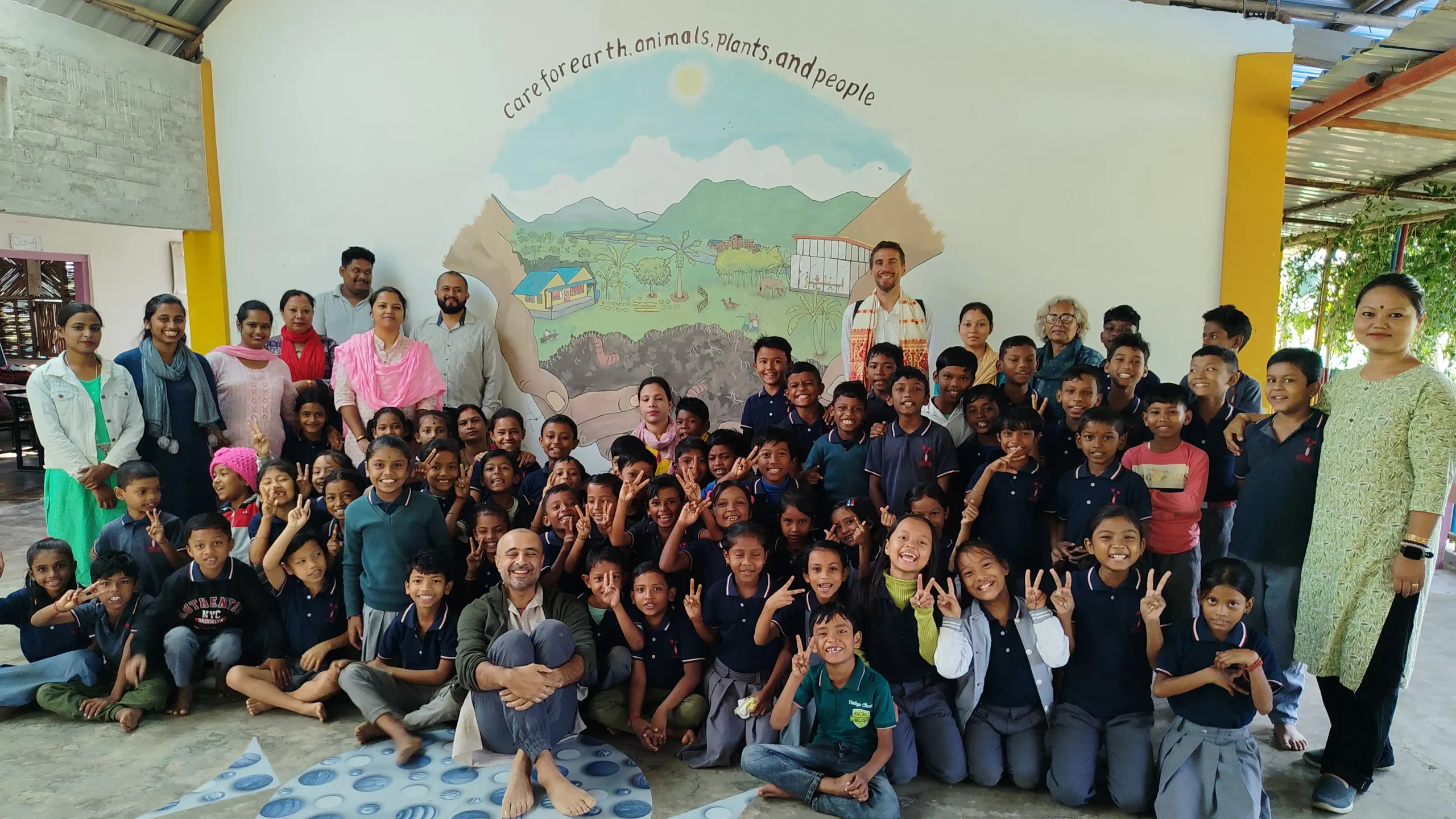
“It is, in fact, nothing short of a miracle that the modern methods of instruction have not yet entirely strangled the holy curiosity of inquiry; for this delicate little plant, aside from stimulation, stands mainly in need of freedom. Without this it goes to wrack and ruin without fail.” — Albert Einstein1
Brand: And that makes me wanna follow my heart. Maybe we have spent too long trying to figure all this out with theory.
Cooper: You’re a scientist, Brand!
Brand: So listen to me when I say that love isn’t something that we invented. It’s… observable, powerful. […] Maybe it means something more – something we can’t yet understand. […] Maybe we should trust that, even if we can’t understand it. […]. — A dialogue between the characters Brand and Cooper, engineer and scientist, respectively, in the movie Interstellar (2014)
“No, no, you are not thinking; you are just being logical.” — Physicist Niels Bohr defending “spooky action at a distance”
Prologue
I am deliberately writing the following more as a stream of consciousness. There is no attempt to be complete or comprehensive in any coherent sense. This is for the following overarching reasons.
We need to have a sense of the key points of curiosity, love and freedom, and how they can be cultivated in a culture of well-being. The latter, well-being, also must be cultivated. I find these to be fundamentally undefinable in any intellectual-logical-written framework in a satisfactory manner.
Instead, we are fundamentally relying on practices of wholesome processes. These engage the heart~mind~body of individuals~collectives to stir awake, grow and nourish. These also keep conditioned the embodied understanding of such words. And such practices of wholesome processes are, at best, complementary for wholesome living. These are anything but a substitute for it. Instead of becoming reliant on such processes and practices, they should be explored curiously and with an open heart~mind~body. The exploration can be to see if they are helpful toward living a wholesome life whose meaning is deeply subjective.
Even in the most profound philosophies and frameworks3 perhaps, these cannot be defined so objectively so as to be followed prescriptively. This dynamic of individual subjectivity~collective objectivity is not just the great challenge. It is also an opportunity of well-being, of fully living life itself, its knowledges and related educations.
We, at Karunar Kheti Trust and Selenghat Valley School, have not yet developed such wholesome processes in any coherent manner. This is because we are creating them in a ground-up manner, based on first principles and participatory processes. This is taking time, as it must. At best, they are currently a very promising mixed bag of processes.
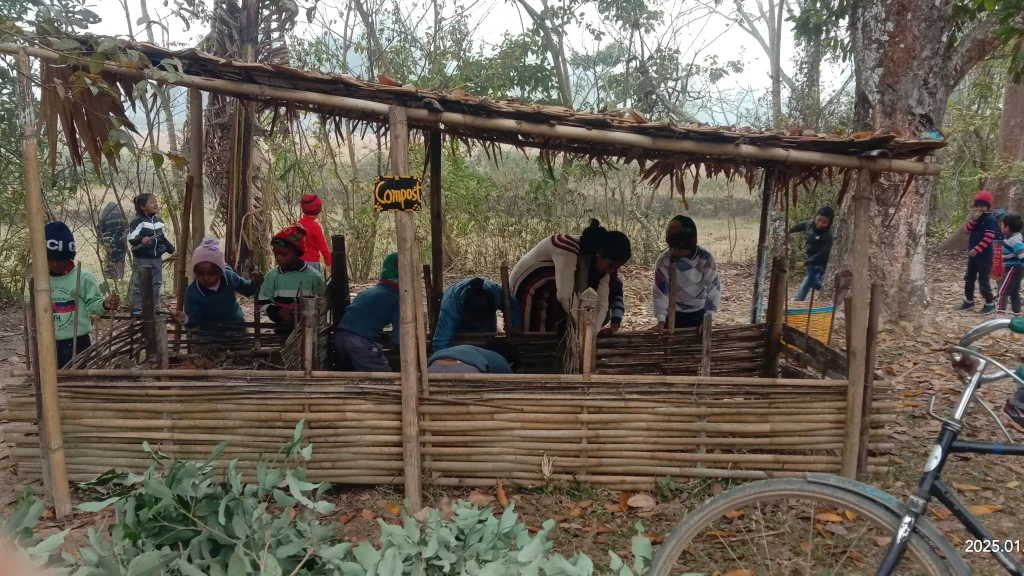
And toward our envisioned outcomes of such processes, we have waded only ankle deep in the great ocean of education. We have relatively fewer firm answers during processes borne of exploring vast open questions. These are profound, but anything but uncommon.
I will try and offer a few key insights, principles, processes, practices and learnings that are appearing to become deeply grounding of our explorations. These are promising sparks toward creating glowing embers that may light up the path toward realizing our vision of education as freedom. These may be seen as pickings from a mixed bag as opposed to a comprehensive and complete framework.
Wonderful curiosity and the learning process
“I think 99 times and find nothing. I stop thinking, swim in silence, and the truth comes to me.” — a saying attributed to Albert Einstein
A flow of the learning process is rooted in an almost effortless habit of the heart~body~mind that arises from the freedom and love of the wonderful curiosity of a direct experience of reality. This can arise in connection with a question or, more powerfully, give birth to it. Such a flow ultimately moves toward its ultimate and numerous tributaries of its great formal knowledge of concepts and techniques. In another flow, the learning process can begin with formally written concepts and techniques and move toward such freedom and loving knowing of direct experiences of reality.
Now, one can imagine there to be a great point of balance between these two flows. This leads to our understanding of education as freedom. This in turn gives birth to embodied understanding, wisdom, and related practical skills. These can enable us to live peacefully with life’s curiosity-driven to need-driven practical problems. A lot of these percolate to settle down with our timeless existential condition. However, I find there not to be such a balance, but an extreme lopsidedness in favor of beginning with concepts and techniques. This has happened to the point where we have lost not just the freedom and love of direct experiences, but also education as freedom.
Why not begin with curiosity?
“Have we become more terrified of intimacy than interstellar travel?” — Aaron StewartAhn4
We live in an age in which we are working on interstellar travel, looking ever deeper inside atoms, contemplating artificial intelligence, and developing analytical understanding of consciousness. But why is it that we do not have enough examples of learning in schools that in a raw and direct way begin with curiosity?
It truly humbles me to ask this question. In its exploration, we are facing profoundly overwhelming challenges. Maybe it has something to do with our larger collective practical ability, capacity and resources to be loving and compassionate. All of these, in the history of humanity, have barely been developing in any significant way compared to all our many other great developments.
Maybe our priorities, as a larger collective, are not getting aligned with what we all need individually and for the health of the planet? Maybe that is why we are continually feeling stuck with increasingly complex, complicated and unsolvable problems. We can no longer ignore this, given that it appears to affect the entire health of the planet, from the smallest to the largest human~non-human being5 ?
Or maybe, in some higher order wisdom that we are still to discover, we are on some kind of a right path that we cannot possibly see at the moment?
I feel though, the answer is already “blowing in the wind”. Yet, in a way, just like the song by Bob Dylan, it is a question that is always fresh and relevant.
Teaching the unteachable
“You cannot transmit wisdom and insight to another person. The seed is already there. A good teacher touches the seed, allowing it to wake up, to sprout, and to grow.” — Thich Nhat Hanh
How can we begin the flow of education with such freedom and love of wonderful curiosity? How can we bring this process into balance with its own systems that begin with emergent concepts and techniques?
All around us, we see profound, yet simultaneously commonly felt problems. To observe these, one must look no further than such common spaces where these are experienced. These span our hearts, to how humanity is struggling with our great common problems. The latter range from the environment and the climate to truth and politics, from religion and science, to governance and economy, from the yin to the yang – of the wholesome life.
Here, I want to take up just one point in the context of this Samuhik Pahal issue. It focuses on cultivating a culture of well-being that allows teachers to embody freedom and love. Such freedom and love allow children to learn with wonder and curiosity. This is an important step toward education as freedom. This can lead to creating a larger culture of freedom, which tersely defined, is freedom from fear.
Such embodiment of freedom and love can anything but be taught or trained in teachers in intellectual-analytical frameworks to be followed mechanically to lead to predictable time-bound outcomes. Instead, and at best, coherent frameworks based on wholesome processes of individual~collective heart~body~mind can be practiced in attempts to stir awake, grows and nourish. These can help cultivate our effortless ability to arrive in moments that allow us to be set free from the experience of time, space, and events beyond their narrowly bounded and fragmented parts, connections, and outcomes. These can support us in experiencing the freedom of their wholesomely boundless interconnectedness that lead to freedom and love.
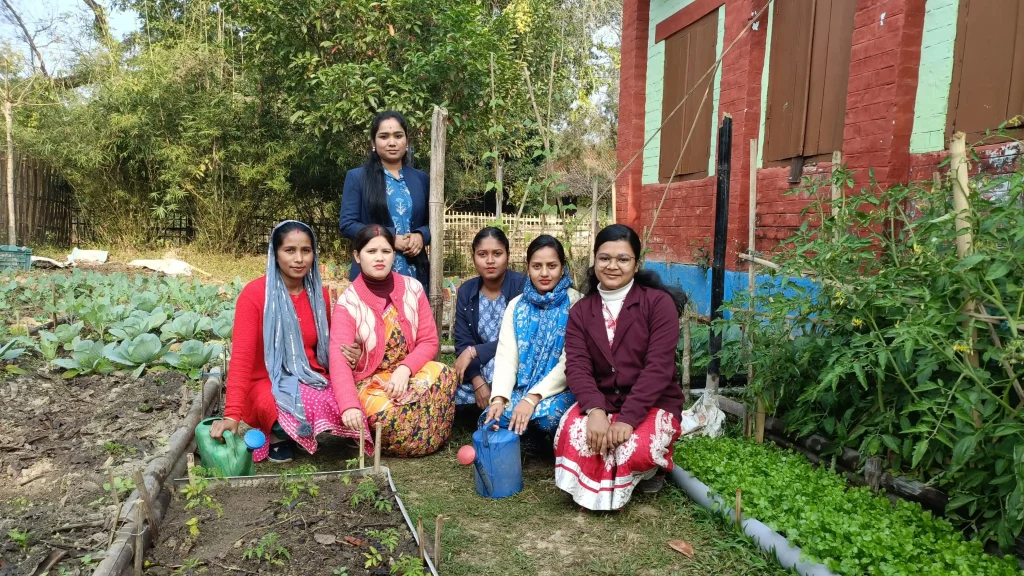
There are profoundly elegant examples of empirically verified logicallycoherent frameworks for such great interconnectedness. These span from modern and scientific ones to ancient experiential~meditative7 ones.
However, one need not look any further than one’s own experiences of such loving freedom. Be it triggered by a favorite song, a loving memory, a moment of great synchronicity, or ordinary presence of powerful depth in a moment. Or this may be any experience in the past, present, or imagined in the future, which sets our heart~mind~body boundlessly free and full of love.
Shashi Nair, in his article for this issue, has already brought out with great validation and powerful catharsis for my own experiences of this point using the metaphor of an engineer and a gardener. I plan to use this below.
Leadership: engineer~gardener
My deepest work has been with not just our teachers and Selenghat Valley School in Assam, but with each individual of our organization for such wholesome organization development. The hope is to allow them their own respective experiences of opening up to such freedom and love.
This approach is based on my own personal experiences of interconnectedness to synchronicity. In such moments, I, using the metaphor of a seed, found myself within the right conditions where my seed’s shell cracked open to manifest my freedom.
Therefore, with trust in the togetherness of the universe and myself, having stocked myself richly with resources of patience, and a great determination and courage that arises from gratitude of such great gifts that the universe gave to me, I engineered boundaries of fluid edges bound to a few firm points to create a garden.
Inside this, I have tried to work, above all, as a loving gardener10, to create such conditions for cracking open the dormant, distracted, to even deeply wounded seeds of human beings. These include those who may never have found the right ecosystem to crack open.
It was the only way for me to lead and the only way I know how to lead. It is by listening to and trusting human beings. It involves knowing wisdom as a seed somewhere inside each one of us.
I must keep doing my loving best to make the garden as ample with diverse nutrients, so that as many seeds can be so ‘touched’, as Thich Nhat Hanh so deeply validates me. I must also wait and listen to the energies of the seeds “with a silent heart, with a waiting, open soul, without passion, without desire, without judgement, without opinion”.
Starting boundary conditions of an engineered garden
There have been a few firm points that were the starting conditions, beliefs, principles of action, inputs, and practices and processes for this journey. I share a few examples of these below.
A condition: Starting with the smallest feasible and practical collective of human beings, inclusive of staff and children, so that we all had enough space and time to build a core human capacity of loving freedom that can be developed deliberately and directly from the flow of the heart.
A belief: Scale as a high order and non-linear dynamical process, based on the stability of a coherent diversity, governed by parameters of peace, happiness and prosperity.
A principle of action: Try not to act out of frustration, fear or anger, even as we acknowledge their presence in us.
An input: Freedom and love as feedback to efforts to try and learn from mistakes.
A practice and process: Our collective morning process of interoceptive~exteroceptive movement~breathing~stillness, for example, mindfulness practices for our inner heart~body~mind, to non-human life spanning microorganisms, to the energy of cosmic bodies like the sun.
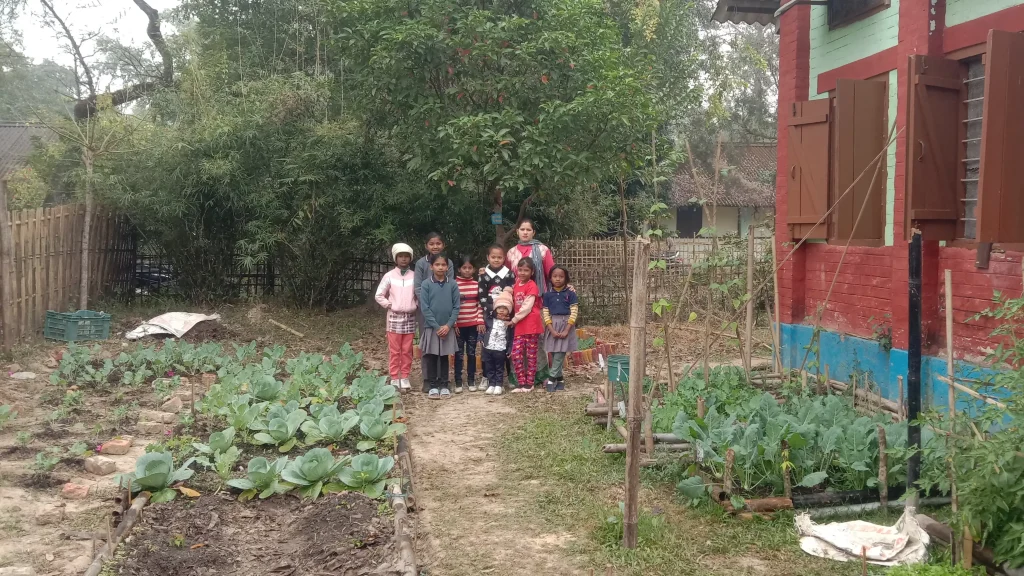
An overarching strategy and mixed bag of related processes and practices
In a way the overall strategy is two-fold.
Nutrients of freedom and love: To make the garden’s ecosystem as rich as possible, with nutrients and related conditions, to crack open a diversity of freedom-loving seeds.
Discipline of freedom and love: Once sprouted, or even in attempts to make~allow a seed to sprout, the garden is made just as rich to give each seed its tangible structure of discipline of freedom to continue to grow, or even maximize its efforts to sprout.
The following points are germane to either one of the two-fold strategy points. These may even be cultivated simultaneously. For such freedom-nutrients to crack open the seeds within teachers, who are deeply conditioned by fragmented and rote methods of learning, is anything but trivial.
Therefore, we do it mindfully, by simultaneously building the counterpart of the discipline of freedom and love. Even as we listen and wait, our actions nudge, and sometimes even directly place, teachers in unfamiliar to uncomfortable direct experiences. The expectation is for them to share, and act based on whatever they experience and be open to criticism.
“Look at the tree!”: We use this exhortation literally and as one of several word-nutrients. It helps to stir the freedom and love of wonderful curiosity and trust. It supports us in immersing in the experiential flow toward learning experiences.
This goes beyond teachers to all the various program leaders to executive staff of our organization. We invite teachers to simply and directly experience phenomena or life as-itis. Looking at a tree is but one such example.
These help to ease the burden of having to know and teach about the tree and its parts of roots, trunk, branches, leaves, etc., ad-infinitum, to a child, as routine academic rote learning. Instead, the teachers start to feel the freedom and love of the associated lightness. They then experience how wonderful curiosity naturally leads to discussions and knowledge of the various parts of the tree and more!
“Stop running!”: We begin our day with wholesome morning processes. These help the heart~mind~body of the teachers, together with the students, to stop running in fear12. These also support them to arrive in loving moments of freedom. Some of the key and stable practices are noted below.
Movement~breathing~stillness: Practices of heart~mind~body that are in the balance of being structured and fluid, planned and spontaneous, include the following. First, movement to awaken and connect to the body using mindful, breath-based movements. Second, rhythmic breathing exercises. Third, stillness-based on mindfulness of breathing to other contemplations and meditations based on, for example, gratitude and loving compassion to awareness of thoughts, feelings, and other sensations.
Custodians of our school’s spaces: Teachers, students, and staff, together, clean our classrooms, toilets, and other physical spaces. Noone is professionally hired for such work. This provides the right opportunities to arrive in a space of collective humility. It also helps to keep conditioned the humanity needed for the highest levels of collaboration.
Being with and caring for the soil, plants, animals, and people: The power of this process is endless. It spans direct experiences of our great interconnectedness to how it gives birth to our greatest knowledge. It also spans principles and methods of science to compassion. Such practices include looking after and building soil, caring for our perennial plants, cultivating annual vegetables and flowers, and recycling and managing our waste.
“Breathe-in and breathe-out!”
“Breathing in,
I know I am breathing in. Breathing out, I know I am breathing out” — A gatha for practicing mindfulness by Thich Nhat Hanh, inspired by Ānāpānassati Sutta
We are exploring~working to develop our breath as a means and as an end for restorative concentration. We also continue to remain in habitual mindfulness of the freedom and love of such concentration.
This helps us as we move on in our day and at various points. Instances involve, for example, at the start/end of a meeting or a class, or as we feel a lapse in our collective concentration. This includes that of the students, or when we need to pause for rest, as well.
This is not just mindfulness of breathing. We are exploring any practice of a process to restore concentration at various points in the day.
Compassionate problem-solving
This is an overarching process used in meetings or other participatory discussions. Here, tributaries of storytelling, and narrative building, etc., converge as freedom-nutrients.
These are driven at the tip by solving problems we all face. However, these are grounded at the base by frameworks of freedom and love. Science and art, faith and reason, modern and traditional frameworks/ philosophies, rural and urban realities, analytical positivism and non-analytical wisdom, modern finance/accounts and ecological farming principles/tools, history and politics, etc., all of which are nothing but stories/narratives that human beings tell and use. These are often used literally in a blackbox, problem-solving mode.
We do realize that theories, stories, tools, etc., are needed for building our school and organization. These are important for developing pedagogies for children and for exploring and developing sustainable practices for caring for the earth and people. These also are crucial for a range of things spanning from modern systems of accounting to livelihood models based on agriculture.
At the deeper base of such listening to seed energies, we are mindful that our organization is being built by people who are anything but a part of such systems. At least they are so in their dominant/mainstream ways of working~being.
While accepting their whole being, we also simultaneously deeply question such systems with them, as if we were interacting with them for the first time. While doing so, we use first principles if needed. We then decide for ourselves their good~bad, rights~wrongs, and numerous yin~yangs.
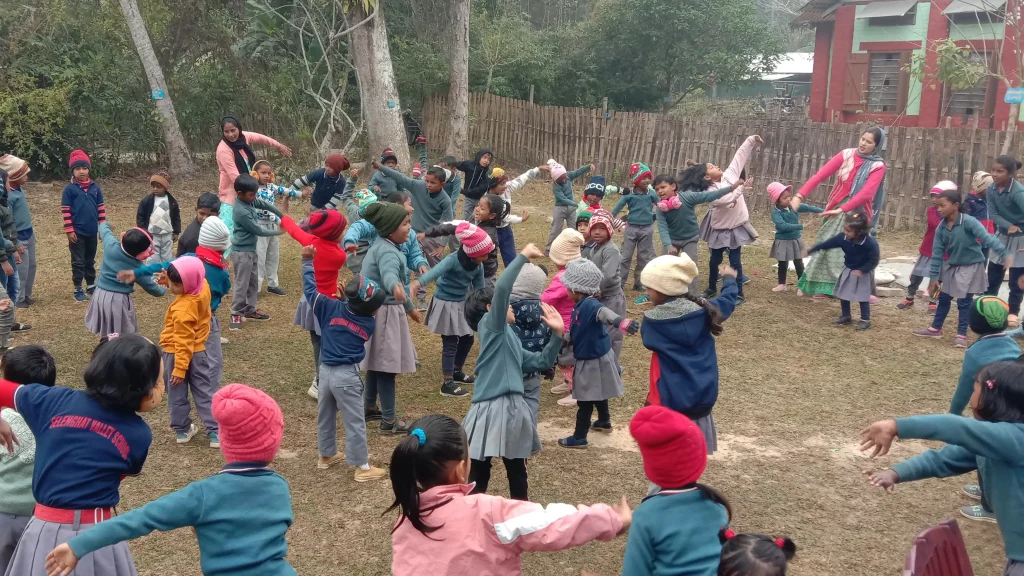
Our growing garden and gardeners
That our garden is growing can now even begin to be measured by the growing number of gardeners and the many different sprouting seeds. Some are even developing the structures and strength of roots and shoots. This is not to say that this growth is impactful at the scale of any sizable culture. However, at least a stable system of significant diversity is palpable in its collective peaceful efforts. This is based on a growing confidence in the flow of wonder and loving curiosity.
Teachers in our school are, little by little, day by day, tilting the lopsided balance toward curiosity. They are increasingly driven by open-ended exploratory problem-solving activities with our young children.
This is increasingly focusing on their freedom and related discipline. We are increasingly discussing their confidence, happiness, creativity, concentration, collaboration, compassion, and communication than linear outcomes of grades.

A weary gardener
“Never give up. No matter what is going on. Develop the heart.” — Dalai Lama XIV
I, as a gardener, after five years, am beginning to feel extremely weary. I must be honest—the art~science of balancing the engineer~gardener, especially as a leader, has been a highly non-trivial challenge. This has been bringing me to the brink of completely eroding and forever losing touch with embodying such wholesome living that led me to so knowing freedom and love of wholesome knowledge.
I am deeply grateful for learnings, which can only come by attempting to bear such challenges. This gives me hope that in my next iteration of attempting this balance, I will better embody the wisdom and practices of my learnings.
I am deeply grateful for the many gardeners who are coming up. Under their leadership, I can even begin to contemplate a period of sabbatical from being the lead gardener. I pray I can act so, take a few steps back, and simply make compost to connect again with such states of wholesome embodiment of life, knowledge, freedom and joy.
My personal well-being strategy and related processes and practices
My well-being strategy and related processes are not in any significant way different from those practiced in our school and organization. It humbles me to share that the creation of our school and organization is in no insignificant way emergent from my need to seek~create a sangha. This is because the nature of well-being that I am trying to develop cannot be had in isolation.
While the initial seed may have been sowed by me, the garden is becoming emergentlyfundamentally richer. I dream of how one day, like in a forest or river where the initial seed or stream of water is lost irrecoverably, my initial contribution will become so in a flow of habits of freedom and love.
Therefore, even as there are flavors of my personal practice that are different, in the context of this writing and also in an overarching sense, I want to end by noting that Selenghat Valley School and Karunar Kheti Trust are increasing becoming the sangha I need for my well-being.
And in this state of being a weary gardener, how often and how much I have relied on this sangha, I can barely recount in words. I do feel a deep gratitude.
Epilogue
“It’s a process” — Shashi Nair
Freedom, love, calm, and insight would be meaningless if there are not their counterparts of fear, despair, agitation and ignorance. This is but a great truth that binds us all. In a way, well-being is just a continuous process of trying to know this by embodying it and trying to live in balance.
I want to end this writing in the humility of and gratitude for such wisdom and dissolve this temporary isolation of my efforts in this great wisdom-sea of humanity.
Authorial note and dedication: I wish to dedicate this writing to Shashi Nair who made me realize all over again, as if anew, as if I was a reincarnation, the wisdom of moments of nurturance. In a way, this writing has been inspired to give myself a note from this wisdom.
Endnotes
- Calaprice, Alice. 2011. The ultimate quotable Einstein. Princeton University Press.
- www.imdb.com/title/tt0816692/
- I am deliberately at the outset not listing references, lest I already start collapsing this wholesomeness into religion, philosophy, science, etc., and so on, ad infinitum. However, over the due course of reading, directly or implicitly in my writing, particular references will stand out. However, these must be seen in the context of such wholesomeness and my personal subjective experiences.
- In “On interstellar, love, time and the limitless prison of our cosmos”
- ‘Wicked problems’ is a currently fashionable, to some even perhaps the right, way to define such problems for our times: https://www.wicked7.org/
- In the ‘Foreword’ for our latest quarterly newsletter titled “Development as freedom borne of practical frameworks of being peaceful”, I have attempted to write more deeply about such freedom from fear.
- “General relativity” and “Interbeing”, by Albert Einstein and Thich Nhat Hanh, respectively, are examples of some of our most profoundly elegant examples of empirically verified logically coherent frameworks for such great interconnectedness. These span the furthest depths of the external material world to the deepest internal depths of our hearts.
- I use this mindfully as only a metaphor. If used in a static and absolute sense, it can lead to the very problem that it is currently feeling helpful to solve. I have noted this also in endnote 5. For example, both engineers and gardeners allow the unteachable to manifest. However, in the current modern times of science, and where its linearized concepts and techniques grip its popular understanding more than its core of freedom and love, it only helps to use it as such a mindful metaphor.
- “Because I see it!” is from-a-stream-ofconsciousness narration of an immediate experience that literally produced the first crack on my shell. “Arjun, when in a problem, why do you open a book?” is another such hard knock about which I will write another time.
- Outside of this garden, I created, to carry on the metaphor, equivalent of engineering spaces. Here it is tempting to say that its extent was firm with analytical and predictive precision. However, I will not do so because only to a superficial observer can engineering but be so trivially linear! This is one such point where the logical coherence toward ultimate truth of even this powerful metaphor breaks down. Engineering, or for that matter any pursuit of life, needs equal servings of the metaphorical gardening mindset! Even a gardener’s work can be reduced to that of analytical and predictive precision! Please also read footnote 8.
- From the chapter titled ‘The ferryman’ in Herman Hesse’s ‘Siddhartha’
- This stems significantly from fear caused by the pressure of having to know and teach academic-rote-fragmented parts of life and knowledge. This is true not just of teachers. We all know this somewhere deep inside, as an extremely superficial artefact of wholesome life and knowledge, and wherein lies our freedom.
- https://www.accesstoinsight.org/tipitaka/ mn/mn.118.than.html
- The triple gems of the Buddha, the Dhamma, and the Sangha have been an invaluable reference in this regard.
- One such wisdom is the experimental philosophy of Dhamma that I practically try to follow. I do realize intellectually that its essence is the same as other philosophies. These are anything but inclusive to any domain of knowledge. Rather, these freely flow across it. And for me, its thread is singularly unifying.

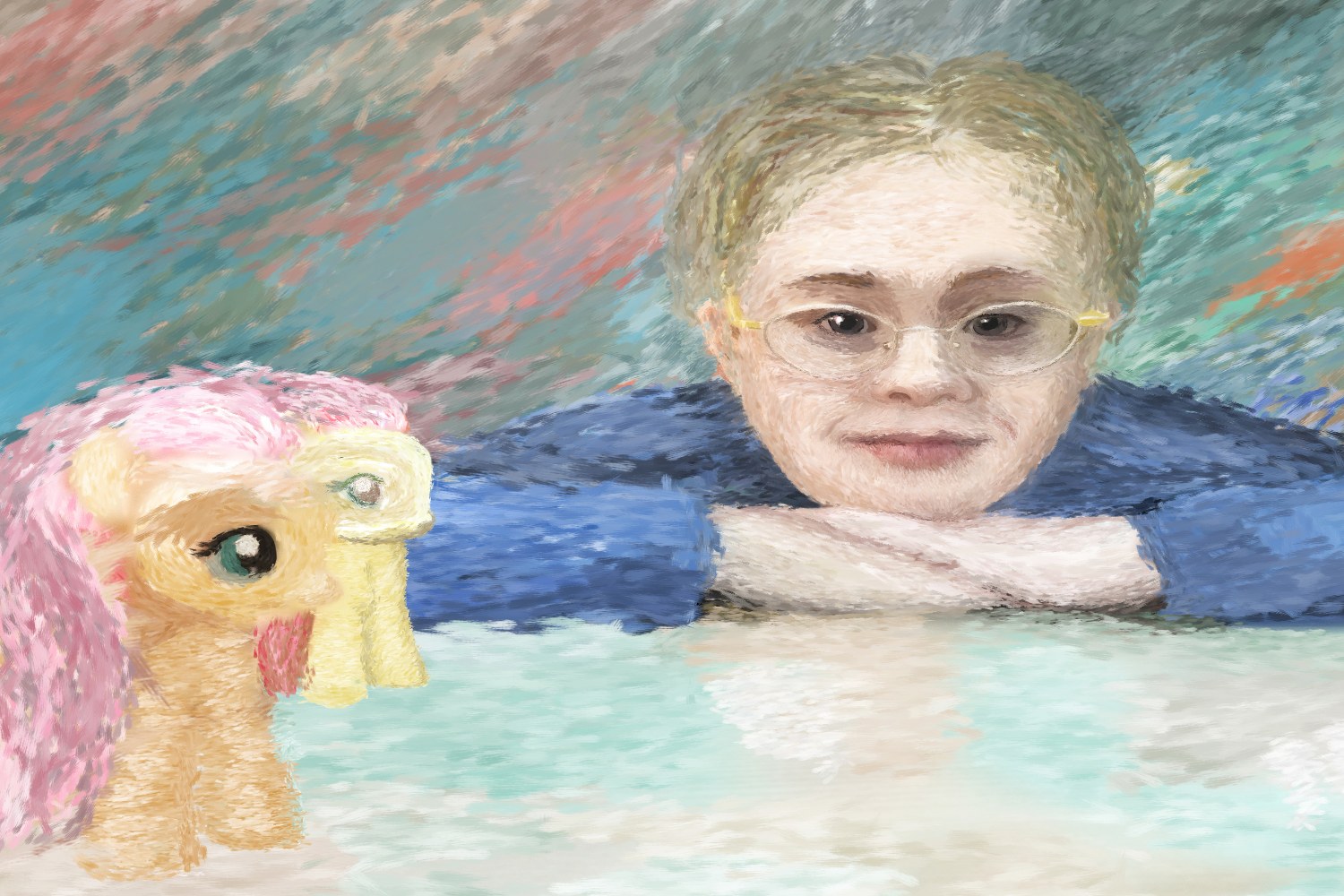
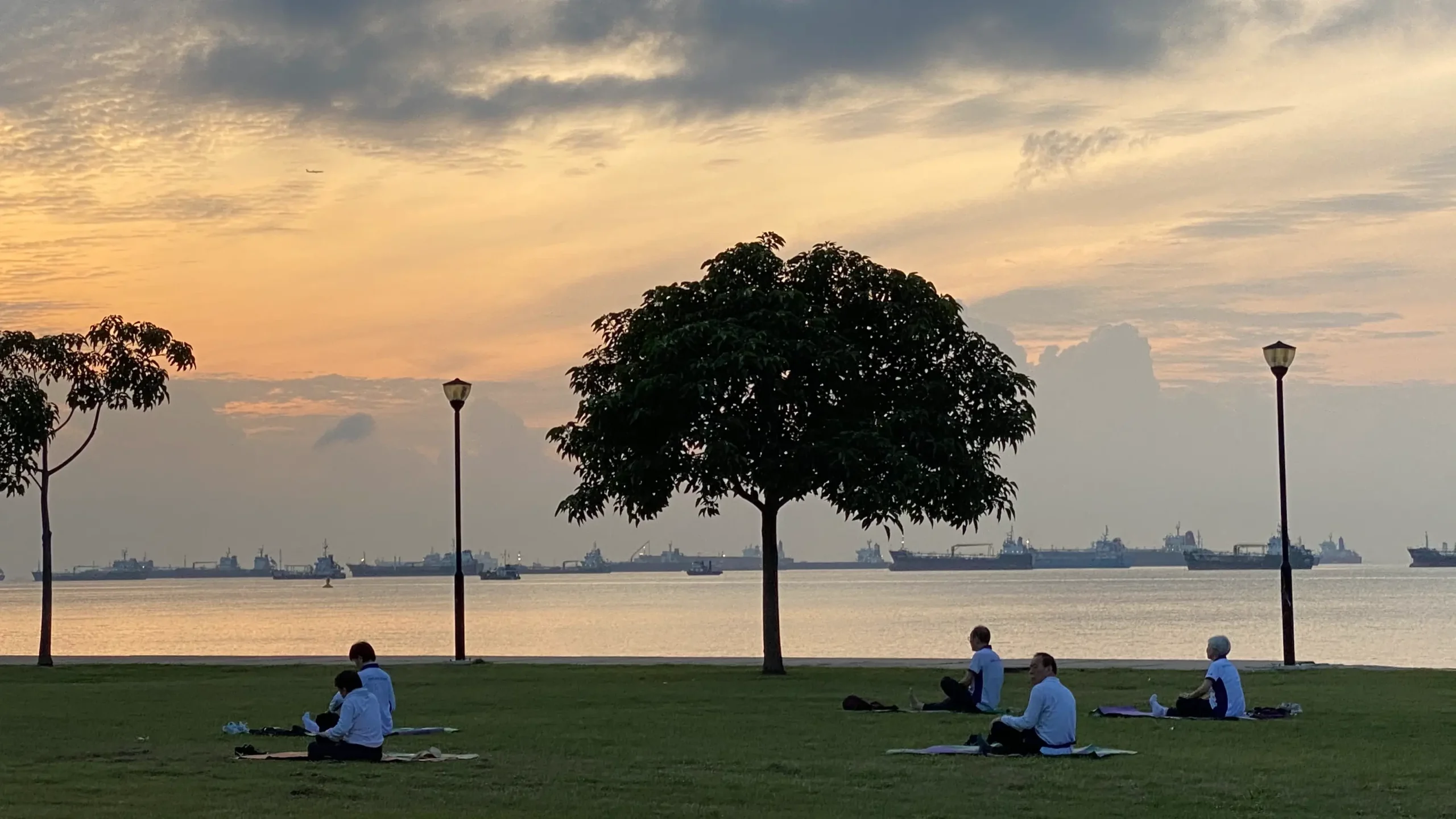

No approved comments yet. Be the first to comment!